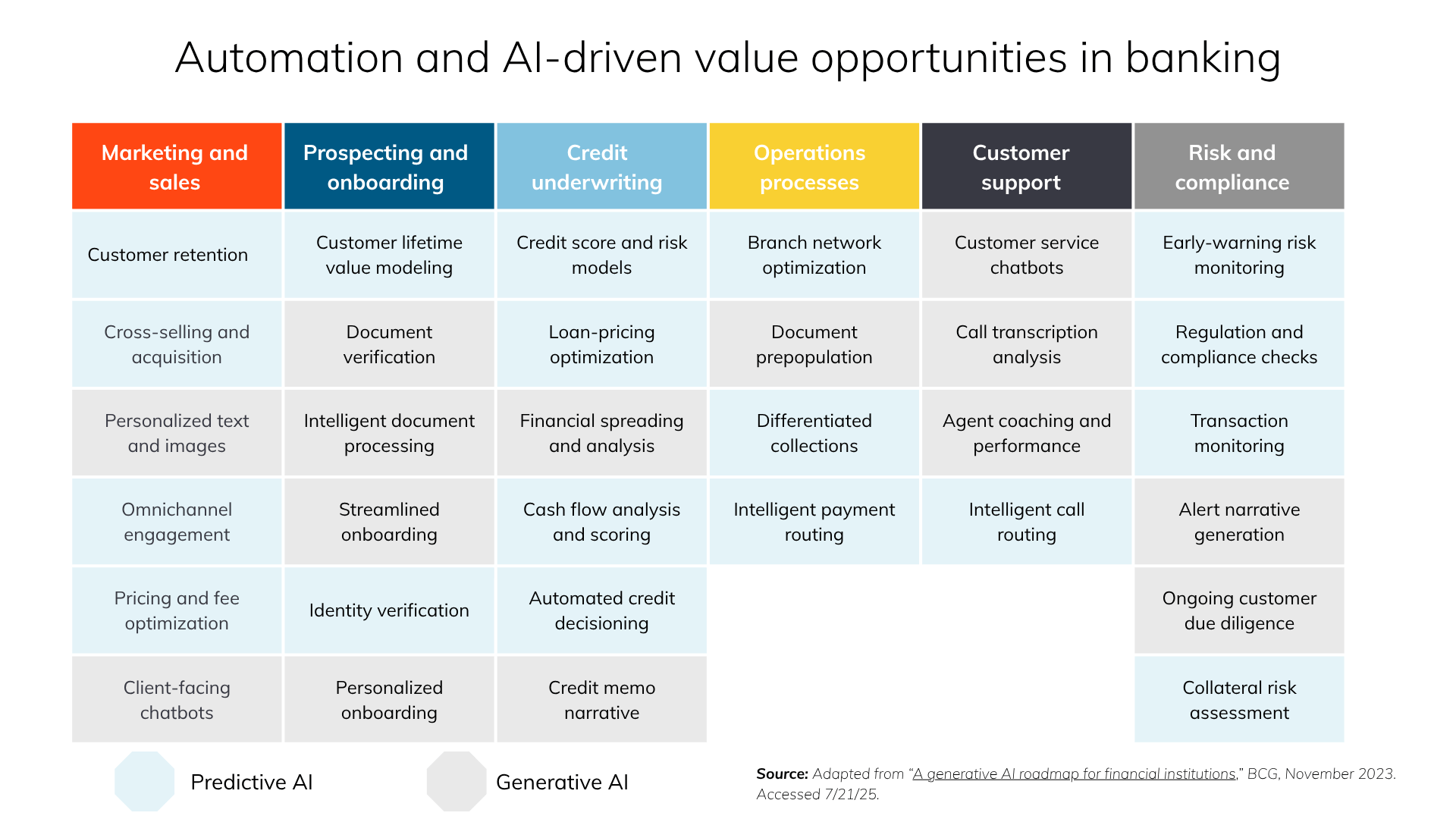Current applications of artificial intelligence across banking fall into six core areas of opportunity, described below along with examples of how financial institutions are already benefitting from AI on these fronts:
- Marketing and sales
AI enables personalized engagement and smarter targeting for bank and credit unions’ marketing and sales.
- Predictive models forecast customer lifetime value
- Generative tools create hyper-personalized messaging and offer recommendations
- AI segments audiences for cross-sell campaigns and streamlines onboarding
Personalizing content on JPMorgan’s mobile phone apps helped increase engagement rates by 25%, the company said during its May Investor Day.
- Prospecting and onboarding
AI can reduce friction in early-stage customer interactions for banking services.
- Automate document verification and identity validation
- Prepopulate onboarding forms and streamline KYC workflows
- Use chatbots for initial data collection and customer guidance
Costs to verify investment bank clients are down 40% where AI is being deployed across the workflow, JPMorgan also said.
- Credit risk underwriting and review
AI enhances accuracy and speed in credit decisions, helping lenders make good decisions quickly.
- Predictive models analyze cash flow, credit scores, and risk thresholds
- Generative AI assists in drafting credit memos and narrative summaries for loan reviews
- Real-time data integration supports more holistic, dynamic underwriting
Bankers Trust, a $7 billion community bank, reduced its commercial loan process for certain loans from two weeks to three to five days using Abrigo’s loan origination for smaller commercial loans, which automates decisioning and features AI-powered loan scoring. And Abrigo’s Loan Review Assistant allows credit risk review staff to evaluate credit quality and document insights in minutes rather than days.
- Operations
Financial institutions can improve back-office efficiency with AI automation.
- AI routes payments, classifies documents, and extracts insights
- Automated financial spreading saves hours of manual entry
- Collections strategies are optimized through borrower-level pattern recognition
NVIDIA’s latest survey of financial institutions’ use of AI found that more than 60% of respondents credited AI with helping reduce annual costs by 5% or more.
- Customer support
With artificial intelligence, financial institutions boost service quality while scaling support teams.
- Chatbots answer common questions and reduce call center volume
- AI listens to and analyzes call transcripts to coach agents and spot risk indicators
- Personalized engagement improves retention and satisfaction
Bank of America’s AI-driven virtual assistant for employees, Erica for Employees, reduced calls into the IT service desk by more than 50%, the bank said. Similar support improvements can benefit clients.
- Risk and compliance
Both predictive AI and generative AI enable institutions to meet regulatory demands with precision and agility.
- Alert narratives and ongoing due diligence tasks can be automated
- AI helps detect fraud patterns across transactions
- Compliance checks are embedded into loan review and audit workflows
Texas National Bank uses Abrigo’s AI-driven check fraud detection to identify fraudulent checks before they are cashed. Within just two months, the bank identified and prevented over $377,000 in fraudulent check transactions.
Altogether, these banking AI use cases drive measurable business benefits: faster loan decisions, higher operational efficiency, improved accuracy, and reduced churn.








